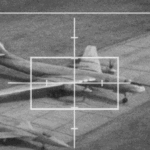On June 1, 2025, Ukraine launched a drone assault of unprecedented scope and consequence. Codenamed Operation Spiderweb, the attack penetrated deep into Russian airspace and struck five high-value airbases, inflicting damage or outright destruction on over 40 military aircraft, including long-range strategic bombers and airborne early warning systems. This was not merely a successful tactical raid—it was a doctrinal earthquake. For security analysts and military strategists, the implications are difficult to overstate: the notion of strategic sanctuary has been shattered. Deep-inland airfields, once considered invulnerable strongholds immune to enemy fire, have now been exposed as soft targets in the evolving landscape of asymmetric warfare.
Thus, Operation Spiderweb marks a strategic inflection point on par with historical shocks like the Japanese attack on Pearl Harbor in 1941 or the surprise Arab assault during the 1973 Yom Kippur War. These events didn’t just shift tactical calculations—they transformed strategic paradigms. In a similar vein, Spiderweb has upended long-held beliefs about the sanctity of rear-area infrastructure, the assumed superiority of manned aircraft, and the presumed limitations of states operating under severe technological and financial constraints.
By combining low-cost, long-range drones with highly adaptive launch tactics, Ukraine has demonstrated that strategic depth can now be penetrated with tools that are portable, concealable, and scalable. Drawing from the fields of military innovation, strategic deterrence, and airpower theory, Ukraine’s new drone doctrine reconfigures the very architecture of force projection—especially for mid-sized or under-resourced nations facing technologically superior adversaries. In this emerging paradigm, deterrence is no longer the sole preserve of superpowers, and vulnerability is no longer confined to frontlines. The entire battlespace has been flattened, and the rear is now the front.
Tactical Asymmetry, Strategic Shock
The targets of Operation Spiderweb were not ordinary facilities. These were critical nodes housing Russia’s strategic aviation: Tu-95MS bombers, Tu-22M3s, and A-50 AEW&C aircraft—the cornerstones of both nuclear deterrence and long-range precision strike. That Ukraine could reach and disable these platforms without air superiority or advanced strike aircraft is, in itself, a case study in tactical asymmetry. The use of cheap, portable drones concealed in mobile wooden cabins and launched remotely signifies a dramatic inversion of the traditional value chain of military power.
This inversion matters. When $1,000 drones can destroy $200 million bombers, the strategic logic that underpins deterrence and air dominance begins to fracture. It is not simply a question of cost-effectiveness, but of survivability. And if survivability is compromised, then so is the credibility of deterrent force posture.
Furthermore, the psychological impact of such asymmetry cannot be overstated. The mere knowledge that supposedly untouchable platforms can be reached and neutralized induces a sense of unpredictability and vulnerability in high command structures. It also emboldens underdog nations to explore similar strategies, potentially leading to a new global proliferation of DIY, off-the-shelf warfare.
This psychological rupture extends beyond the battlefield. It reaches into the strategic calculus of adversaries who may begin to reassess the balance of power and the costs of aggression. The deterrent value of these platforms is undermined not by superior force, but by ingenuity, mobility, and decentralization—principles more native to insurgency than to conventional war.
Doctrinal Disruption and the End of Strategic Depth
Strategic depth has long undergirded the logic of airpower. Rear-area sanctuaries—those located far from the frontline—have been assumed safe due to their distance and supporting defense layers. Operation Spiderweb demolishes that assumption. The idea that geography alone can confer protection is no longer tenable.
This echoes historical precedents. Just as Pearl Harbor discredited the battleship and elevated naval aviation, and just as the Yom Kippur War ushered in the era of missile-centric combined arms, Spiderweb may mark the beginning of the end for manned strategic bombers as bastions of airpower.
More broadly, it calls into question the very structure of traditional force posture. The Western military model, built on the assumption that homeland and rear-echelon bases are insulated from immediate threat, may be untenable in future conflicts. For countries like the U.S., China, and India, whose doctrines depend on regional sanctuaries and hierarchical escalation ladders, this disruption will require a reevaluation of where, how, and why forces are stationed.
The end of strategic depth also forces a recalibration of military logistics. Supply chains, traditionally thought secure, may need to become mobile, redundant, and invisible. Command structures will have to emphasize autonomy at the tactical edge, as centralized control may no longer be feasible under the constant threat of swarm-based disruption.
Innovation Under Constraint: The Ukrainian Model
What makes Ukraine’s approach especially illuminating is its genesis under conditions of scarcity. Without guaranteed U.S. air defenses and operating under logistical degradation, Ukraine didn’t plead for more interceptors—it redefined the question. Instead of intercepting missiles, it chose to disable launch platforms. This is what theorists call “innovation as substitution.”
Ukraine has built a drone-industrial ecosystem with wartime agility. By 2025, it had produced over 2.2 million drones, drawing on civilian tech, open-source software, battlefield feedback, and a horizontally integrated defense-industrial loop. This isn’t merely innovation; it’s insurgent ingenuity institutionalized.
Moreover, this model may become a blueprint for other embattled nations. Ukraine has proven that national resilience and innovation do not require extensive military budgets or decades-long procurement cycles. They require networked collaboration, rapid feedback, and the integration of civilian ingenuity into military doctrine. This form of what might be called “horizontal war-making” could become the dominant model for 21st-century conflict.
It also challenges our understanding of what constitutes a military-industrial complex. In Ukraine’s case, it is not a handful of defense giants driving innovation, but rather a collaborative ecosystem of volunteers, small tech companies, diaspora communities, and state agencies. This pluralistic innovation engine is faster, more agile, and more democratic—arguably more adaptive than centralized procurement bureaucracies.
Vulnerability and the Future of Air Power
Operation Spiderweb offers a sobering revelation: fixed-base operations are becoming obsolete in a drone-saturated environment. If Russia’s tightly surveilled rear can be penetrated, so too can NATO’s eastern airfields, U.S. bases in the Indo-Pacific, or India’s northern installations. The costs of defending high-value, immobile platforms will increasingly outweigh their strategic utility.
Thomas Mahnken put it succinctly: survivability will be defined not by armor or scale, but by dispersion, concealment, and adaptability. We are entering the age of post-platform warfare, where electronic camouflage, mobility, and strategic unpredictability may matter more than massed fleets or exquisite sensors.
In response, we may see a fundamental restructuring of air forces worldwide. Hardened shelters, rapid runway repair capabilities, mobile logistics teams, and pre-distributed command and control units will become critical. National security budgets will need to shift away from platform-centric acquisition to multi-domain resilience investment.
This transformation will not be easy. It demands not only technological overhaul, but also a deep cultural shift within military institutions. The prestige of flagship platforms—aircraft carriers, bombers, stealth fighters—must give way to a more humble but effective focus on survivability, adaptability, and systemic redundancy.
Deterrence Reimagined: From Punishment to Preemption
In classic deterrence theory, states avoid escalation through threats of punishment. But Operation Spiderweb demonstrates a shift toward deterrence by denial and disruption. Ukraine did not wait for another wave of missile attacks. It struck first, reducing Russia’s ability to strike at all.
This represents a new category of strategic action: sub-threshold, high-impact operations that degrade an adversary’s capabilities without crossing nuclear or alliance red lines. It is an emerging grammar of coercion, one that may define future conflicts between small states and great powers.
If these strategies are adopted more widely, traditional deterrence models will need updating. No longer will the question be “What happens if I retaliate?” but rather “How do I avoid becoming irrelevant in a fast-moving asymmetric exchange?” This shift places even greater importance on intelligence dominance, agile force posture, and doctrinal flexibility.
Importantly, this new form of deterrence is not about overwhelming strength but about calculated disruption. It is about reshaping the adversary’s risk calculus—deterring not through fear of punishment, but through certainty of strategic cost.
Conclusion: The Rear is the New Front
Military history is punctuated by moments that redefine the character of war. Operation Spiderweb may be one such moment. It forces a reevaluation of deterrence, power projection, and the role of human-operated platforms in future air campaigns. As Ukraine has shown, power is no longer synonymous with size, nor deterrence with geography.
In an era where war can be launched from a wooden shed, states must rethink how they build, station, and secure their forces. The future belongs not to those who dominate the skies, but to those who can render that domination irrelevant.
Future conflict will increasingly be decided not by whose machines are bigger, but by whose systems are smarter, faster, and harder to predict. In the shadow of Operation Spiderweb, the world must now confront a new reality: when the rear is the front, and the smallest weapon can have the largest impact, the old playbooks must be torn up and rewritten.







